Of all the World War II sites in Italy, those in the city of Cassino are among the most noteworthy. (Monte Cassino itself is arguably one of the most visited WWII sites in the whole country.) Conveniently located halfway between Rome and Naples, Cassino is easy to visit and offers enough WWII history for an enriching day or two on your Italy road trip.
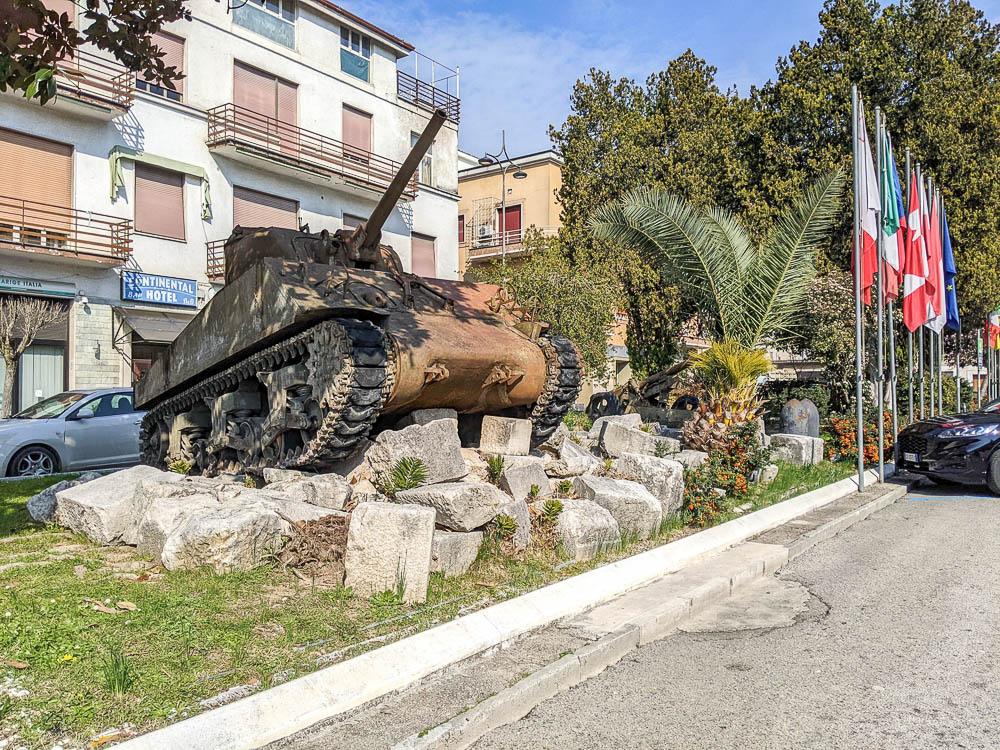
WWII history in Cassino, Italy
After landing at Salerno in Operation Avalanche, Allied troops made their way north toward Rome. But by January, they had become stalled at the Gustav Line—the most heavily defended German defensive line across Italy. The key point in the Gustav Line was the town of Cassino, notable for a massive abbey atop a dominating hill that overlooked the entire region (Monte Cassino).
The “Battle for Cassino” is actually made up of four battles that lasted from January to May 1944. The objective was to break through the Winter Line where they would have a clear road to Rome. (The Winter Line was what they called the Gustav Line + the smaller Bernhardt and Hitler Lines.) Though the German defenses did slow down the Allies for a time, the final result was Allied victory. Rome was then liberated one month later.
This 3.5-minute video by Poland’s Ministry of Foreign Affairs sums up WWII history in Cassino.
Ultimately, the Battle for Cassino resulted in over 55,000 Allied casualties, 20,000 German ones, and 2,000 civilian losses. The historic abbey was almost completely destroyed, but not before the monks and priceless treasures could be relocated.
WWII sites in Cassino today
Today, you can visit the world famous hilltop abbey at Monte Cassino, as well as a number of surrounding cemeteries, memorials, and museums. Down in the town itself, WWII history in Cassino is still very much front and center for its residents. You’ll be able to see this in many memorials and war remnants around town.
Most visitors to Cassino come to see the monastery and then move on. But, there’s so much more to see that it’s worth staying in town for at least a full day or two! Here are some of the most significant spots you should check out while exploring WWII history in Cassino, Italy.
Map of Cassino WWII Sites
This map contains all the WWII sites in Cassino I mention in this post. To save this map: Click on the star ⭑ next to the map’s title to save in your Google Maps. To use this map: When you get here, open Google Maps on your phone, click “Saved” at the bottom, then click “Maps.”
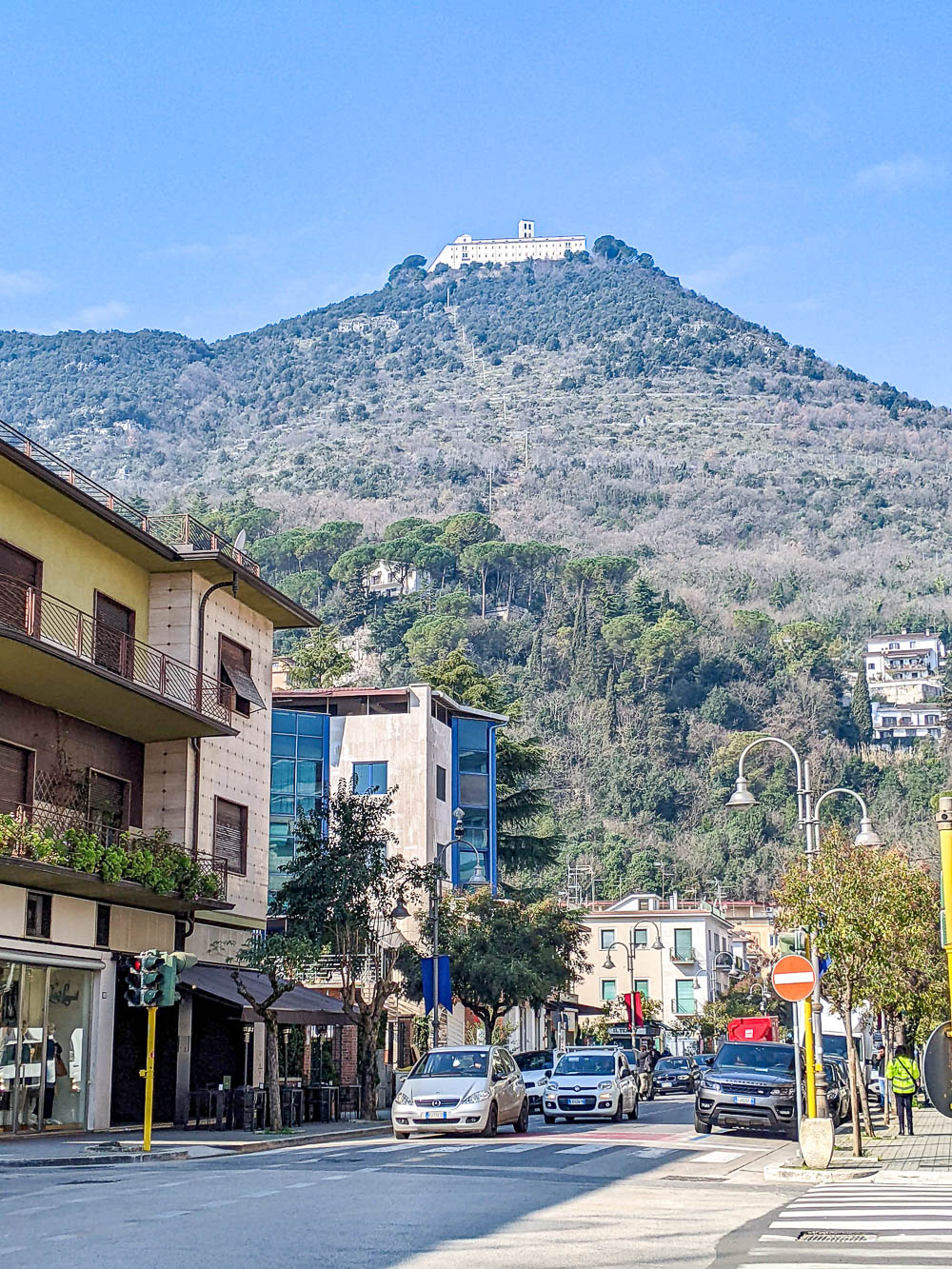
1. Monte Cassino Abbey (Abbazia di Montecassino)
The first abbey on this site was constructed way back in the 500s AD, but it was already an ancient worship site before that. After that one was sacked by invaders, another was built in 718 AD. It was sacked again in 883, then rebuilt in 949. After centuries of use and decline, a devastating earthquake, and further sacking, what was left would stand until World War II.
Even though this longest-lasting of the monasteries was within a protected historical zone, the Allies still believed the Germans were using it as an observation post. So, they destroyed it with bombing raids in February 1944. (This is super controversial, by the way.)
But guess what? The abbey at Monte Cassino, true to form, was rebuilt yet again in the 1950s and 60s. And that’s the abbey you can visit today. And she’s a beaut.
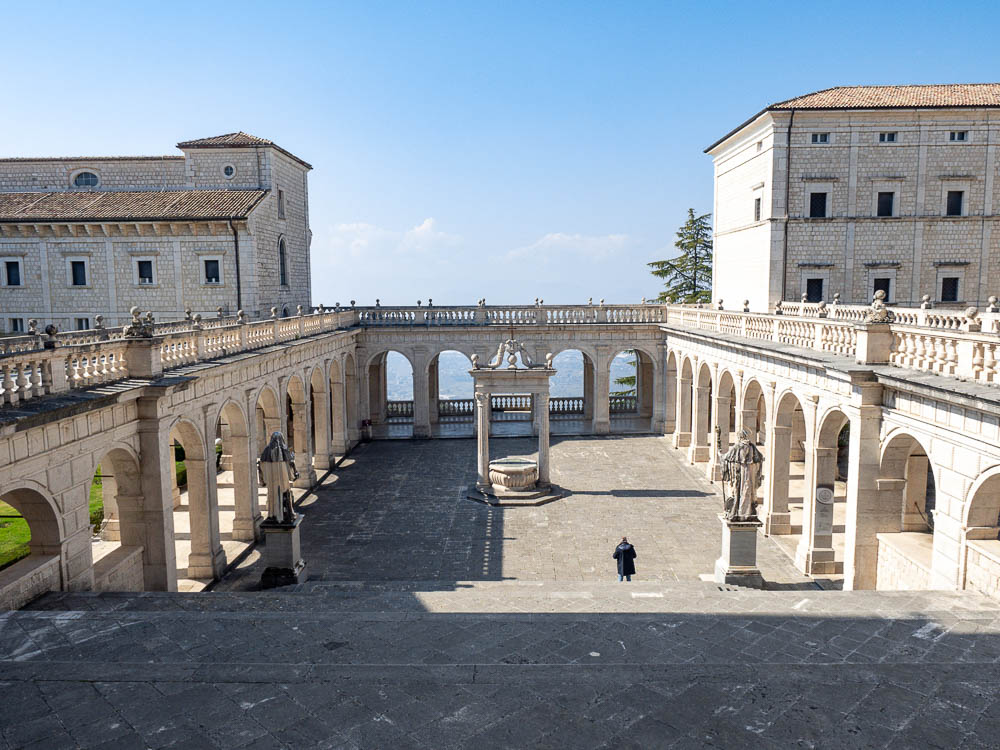
Visiting Monte Cassino today
Though what you see today at Monte Cassino is still somewhat “new,” it’s been rebuilt in the same way, in the same place.
You can easily visit by driving up to the abbey and just heading inside. The site is free to visit and some parts are always open to the public so you can walk around without a guide. See their official website here.
You can explore the cloisters and look out over the entire valley below and far into the distance. You can also visit the basilica and crypt free of charge. For a small fee, you can also visit the abbey’s museum (but only on the weekends).
You can also book a guided tour. This includes a visit to the “Old Area” of the abbey, the small bit of original abbey that was not destroyed in the 1944 bombing raids. This is your chance to learn all of its history and its role in World War II. (They do ask you book these as much in advance as possible.)
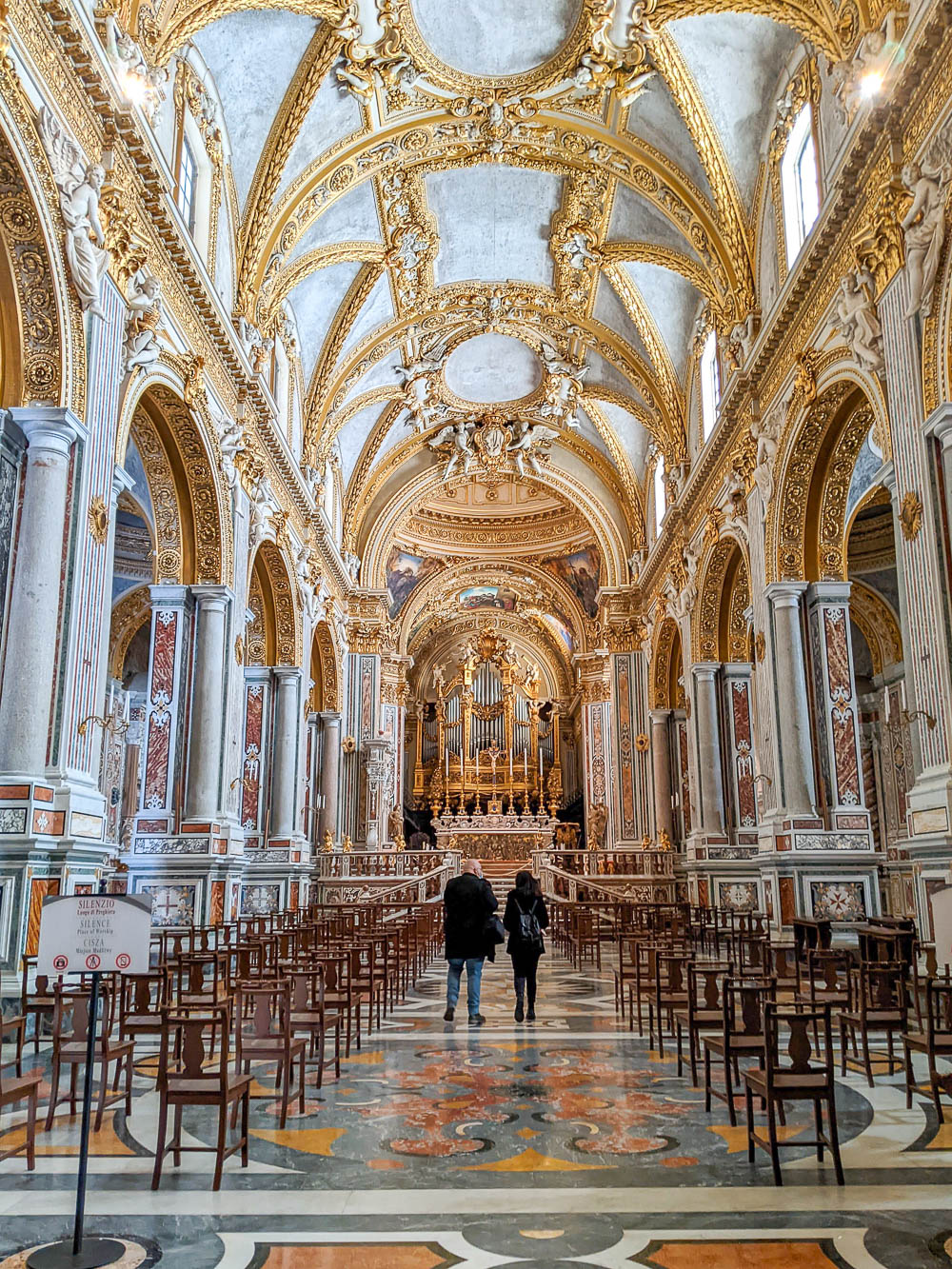
How to get to Monte Cassino Abbey
Here are a few different ways you can easily visit the Monte Cassino abbey:
By car:
Driving to the Abbey at Monte Cassino could not be easier, provided you can follow your GPS. (Though the roads up are windy and steep!) Parking is available on site for €3. If you still need a car for your Italy trip, check out some great deals here.
By train:
It is also possible to get to the abbey by way of the train system (+ bus). From wherever in Italy you are, take the train to Cassino. From Cassino’s main train station, a bus for the abbey leaves daily at 9:55am, 12:30pm, and 3:15pm. (It leaves the abbey bound for the train station at 10:20am, 12:50pm, and 5:10pm.)
To book these tickets is equally as simple. On the TrenItalia website, enter “Cassino Abbey” as your destination and it will include the train + the bus ticket you’ll need to get there. (Your destination will be Cassino Abbazia if you’re shopping in Italian.)

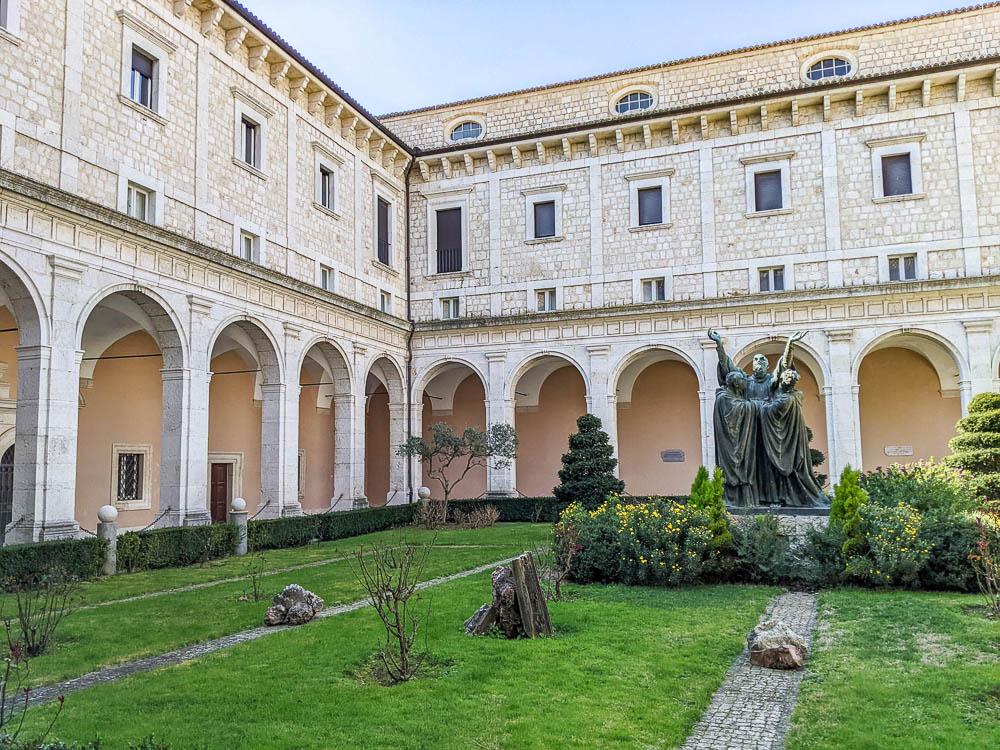
Organized tours of Monte Cassino Abbey
Another super easy way to visit Monte Cassino by doing the bare minimum travel planning is to book a fully organized tour. This way, you simply have to pay and show up while everyone else handles the logistics. Here are a few of the most popular Monte Cassino tours:
Monte Cassino and WW2 Battlefield Tour by Anna
This 3-hour tour of Monte Cassino and the surrounding battlefields led by Anna, a local historian and tour guide, is a crowd favorite.
You'll have your own private air-conditioned minibus and will enjoy a personalized tour.
Full Day Monte Cassino Day Trip from Rome
This 8-hour day trip takes you from your hotel in Rome to the WWII sites in Cassino and back. On this fully guided tour you'll visit the Monte Cassino abbey as well as the Polish and Commonwealth war cemeteries.
Footprints on the Battlefield Trails of Monte Cassino
As far as Monte Cassino tours go, this one is totally unique. If you'd like to spend some time outdoors on your visit, check out this guided tour of the area's battlefield trails. You'll learn all about the Battle of Monte Cassino and see key areas from the soldiers' points of view.
All other Monte Cassino tours
There are a number of worthwhile Monte Cassino tours to check out actually, and from starting points other than Rome and Cassino too. See them all here and find the best one that fits with your trip.
Pro tip: There is a series of trails off the parking lot for the Polish War Cemetery (next on this list) that will take you through the woods to, among other locations, the monastery’s brewery. Break up your day of somber history with some great abbey beers in a quiet spot that feels like it’s in the middle of nowhere. (Follow the trail signs marked birrificio.)

2. Polish War Cemetery
The last of the four battles at Monte Cassino fell largely to Poland’s 2nd Army Corps. Its general Władysław Anders believed that by fighting this crucial battle Poland would be able to prove its loyalty to the Allies and all other enemies of Nazi Germany.
Though this and the entire Battle for Cassino resulted in an Allied victory, 1,079 Polish soldiers lost their lives. Almost 3,000 more were wounded and 345 were never found. Of those who didn’t survive, 1,066 were laid to rest just outside the grounds of the monastery in what is now the Polish War Cemetery.
The Polish War Cemetery is massive, and appears even more so when you see it from the balcony of the abbey. It’s full of meaningful sculptures and memorials. The cemetery is an easy drive just a few minutes from the monastery, and you’ll find a free parking lot just outside.

3. Memorial Museum of the 2nd Polish Army Corps in Monte Cassino
At the entrance to the Polish War Cemetery is the Memorial Museum of the 2nd Polish Army Corps in Monte Cassino. (Known in Italian as Museo Memoriale del 2° Corpo d’Armata Polacco a Montecassino and in Polish as Muzeum Pamięci 2 Korpusu Polskiego na Monte Cassino.)
This small but informative museum tells the story of the Polish contribution to the Battle of Monte Cassino as well as Poland’s history during both the German occupation and the Soviet occupation.
Beyond Cassino, you can also learn about the Polish Army’s actions throughout the Italian campaign and more. You’ll also get to see a collection of artifacts, some of which were only discovered in 2020. The exhibits here are captioned in English, Italian, and Polish. The employee on site the day I visited also gave me a full rundown of Polish war history.
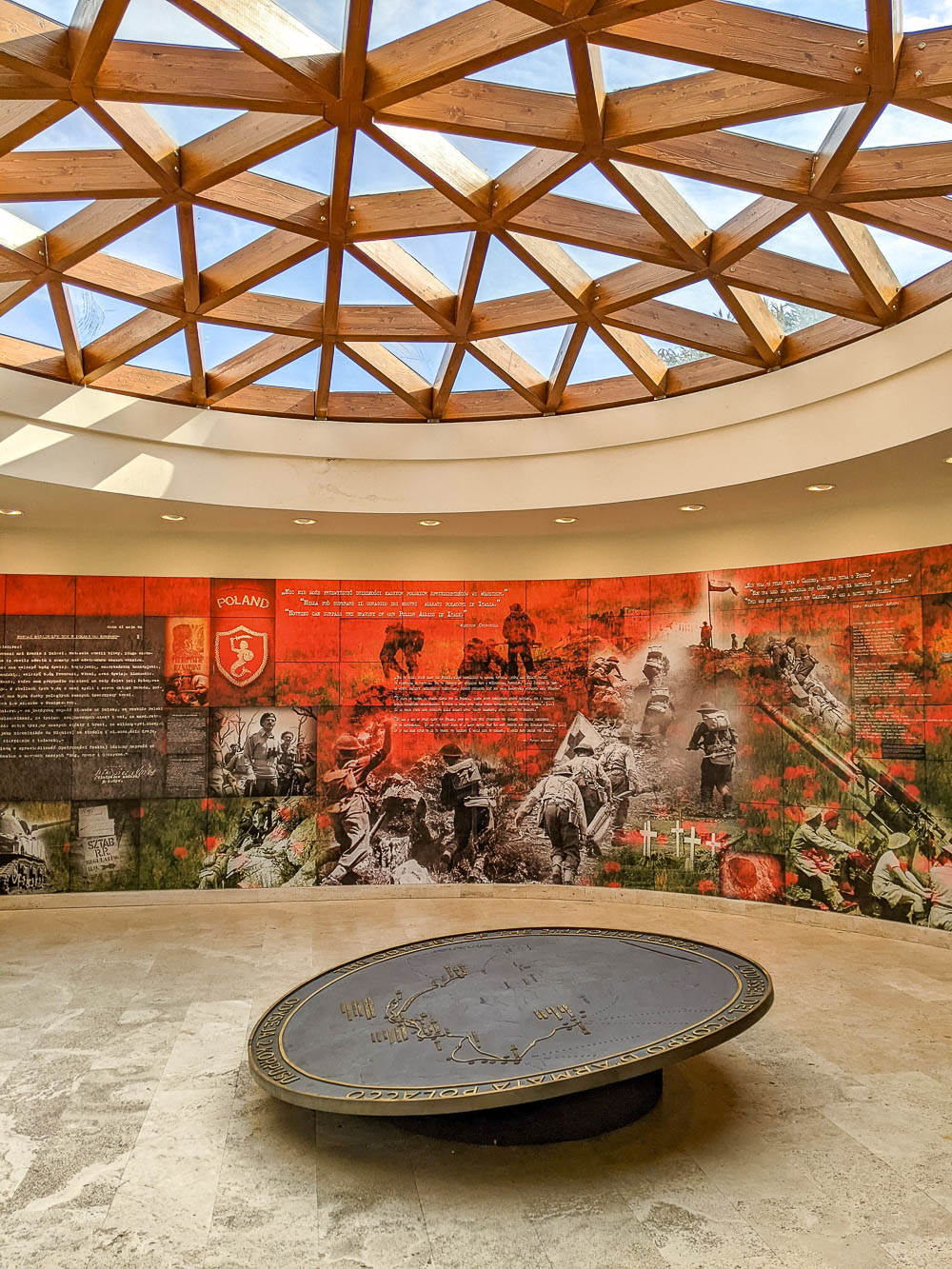
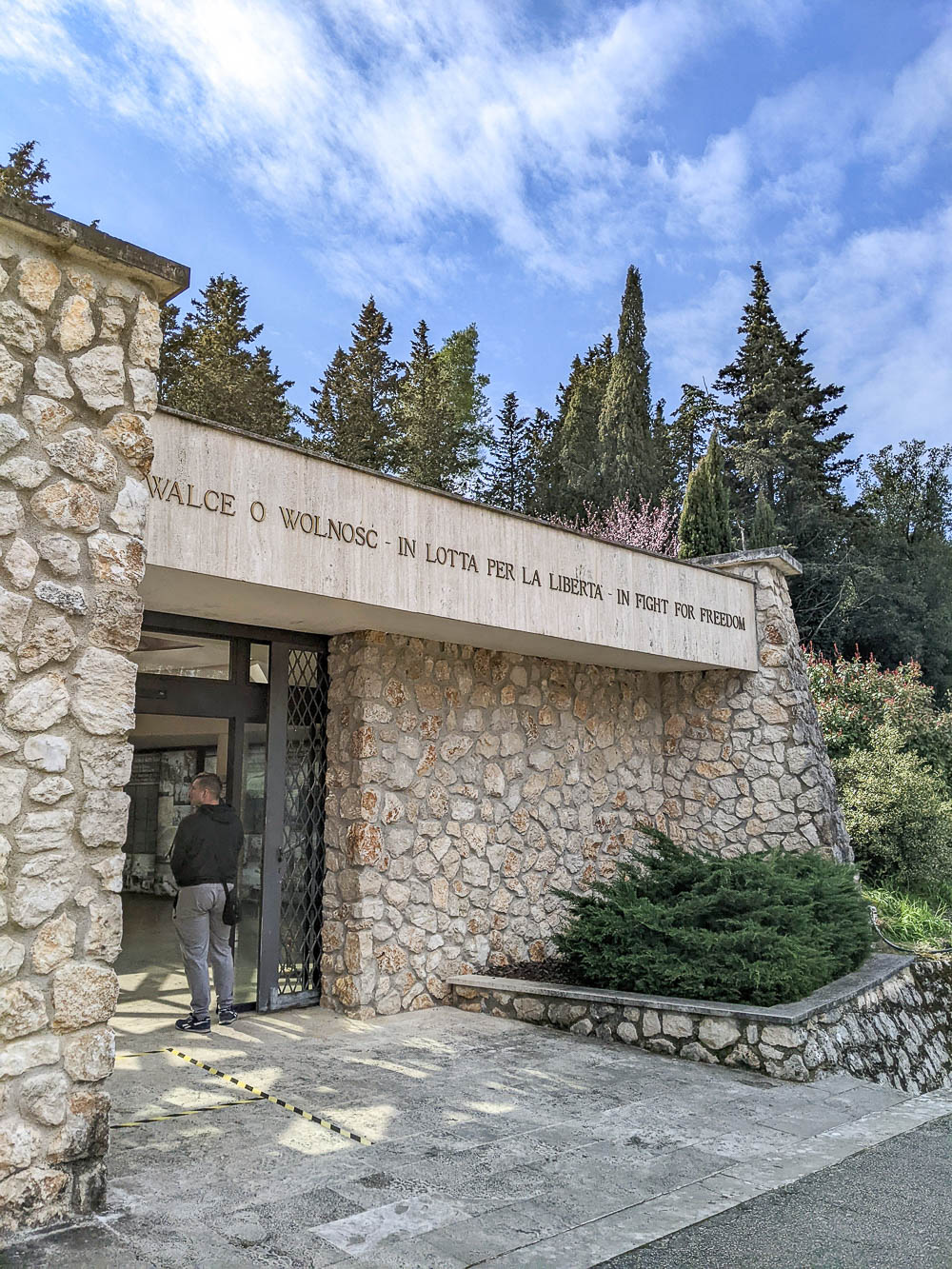
4. Monument to the 3rd Carpathian Rifle Division on Hill 593 at Monte Cassino
The Monument to the 3rd Carpathian Rifle Division on Hill 593 at Monte Cassino is a massive hilltop memorial that honors the Polish soldiers who died at Monte Cassino and in the greater Italian campaign. The name comes from the Polish infantry division that took Hill 593 (Mount Calvario) during the Battle of Monte Cassino in May of 1944.
It was designed by Tadeusz Zandfos, an architect and captain of the 3rd Carpathian Rifle Division, and built by men of the 2nd Polish Army Corps. It was inaugurated in July 1945 but refurbished in 2020 which is why it looks so shiny and new.
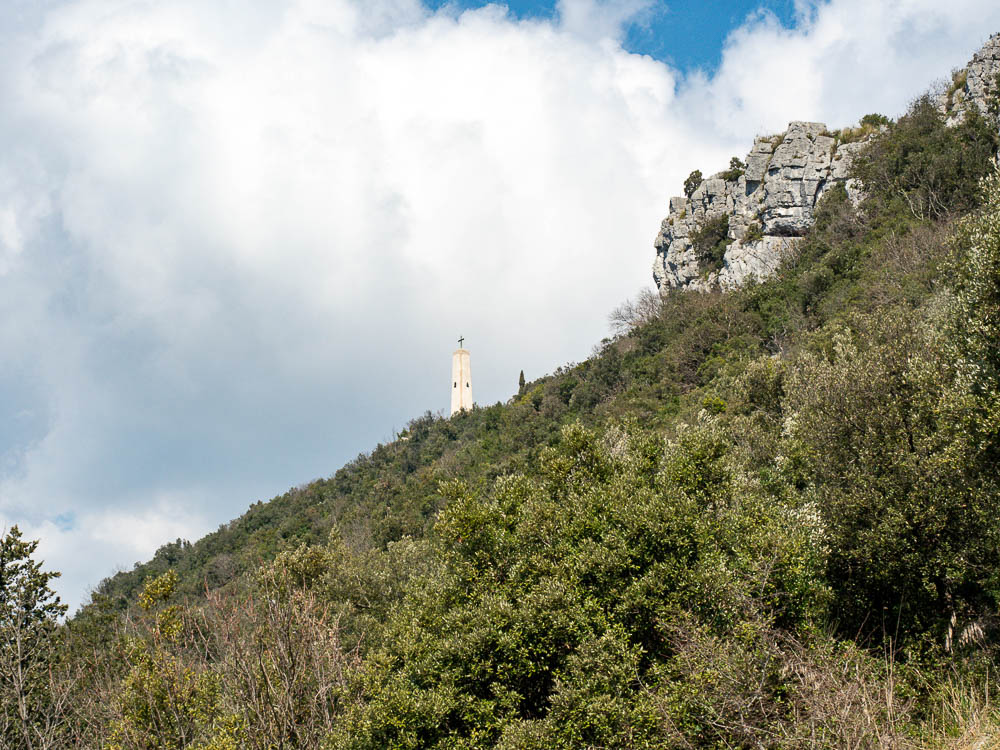
Supposedly, you can easily walk here from the Polish cemetery via a path and some stairs. But I’m not gonna lie to ya – this is where I was trying to go when I stumbled upon the brewery. (And from there, this monument appeared light years away. I blame jet lag.)
From the parking lot at the cemetery, there is a trail marker that points the way to the monument, but I must have taken a wrong turn in the woods somewhere. (One that led to beer though, so I’m not mad about it.) I will try again on my next visit, but my advice to you would be to ask the staff in the Polish museum how to get there, just to be sure.
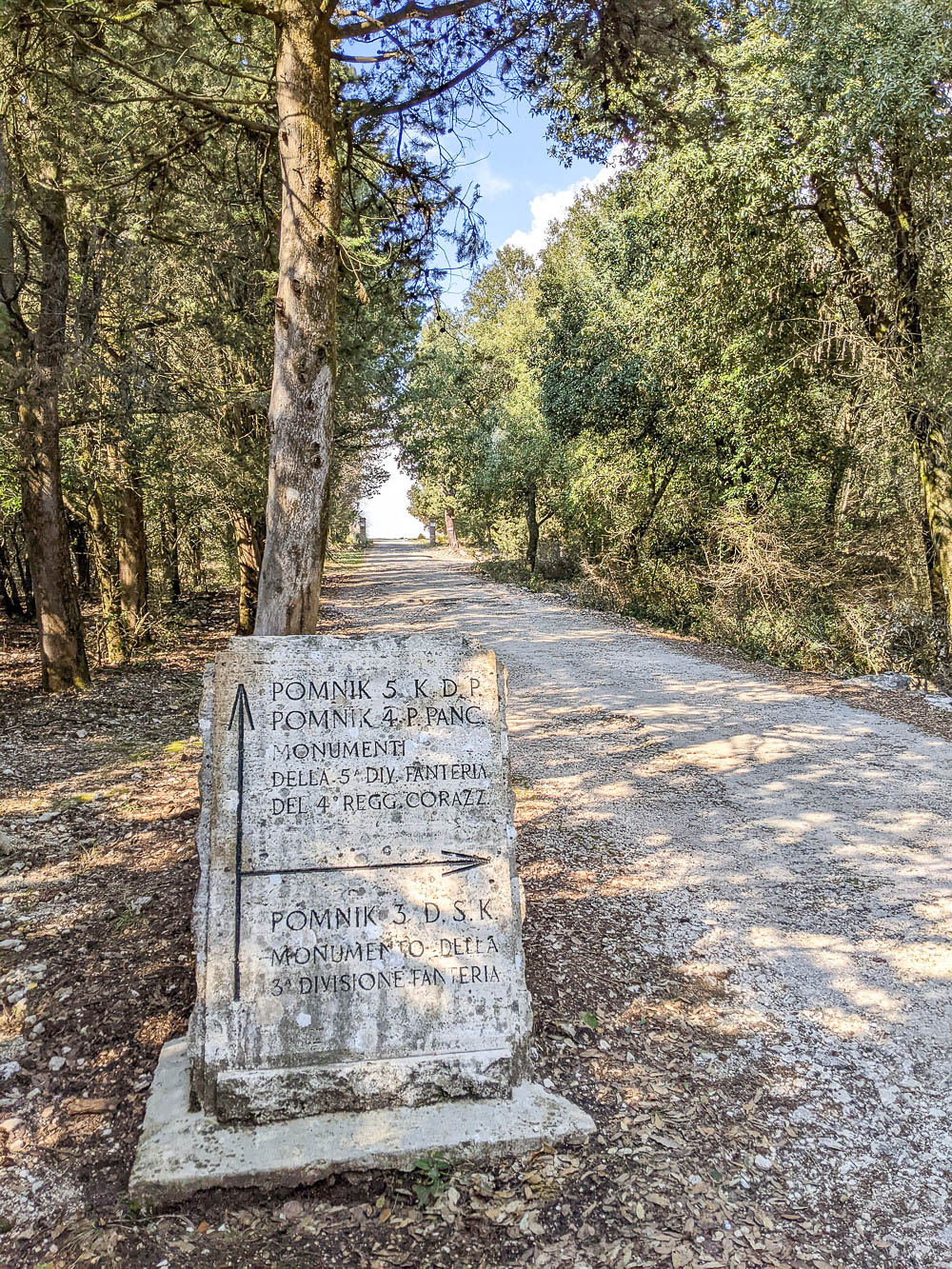
5. Polish tank memorial (Monument to the 4th “Skorpion” Armored Regiment)
This Polish tank memorial is a memorial erected from the remains of a Sherman tank that exploded after rolling over a mine on the morning of May 12, 1944. The entire tank crew was killed and the commander of Poland’s 2nd Armored Brigade demanded a memorial be constructed in their honor.
The memorial consists of a cross made from the tank’s tracks that stands on the tank’s wreckage and two bronze plaques, surrounded by a small rock wall.
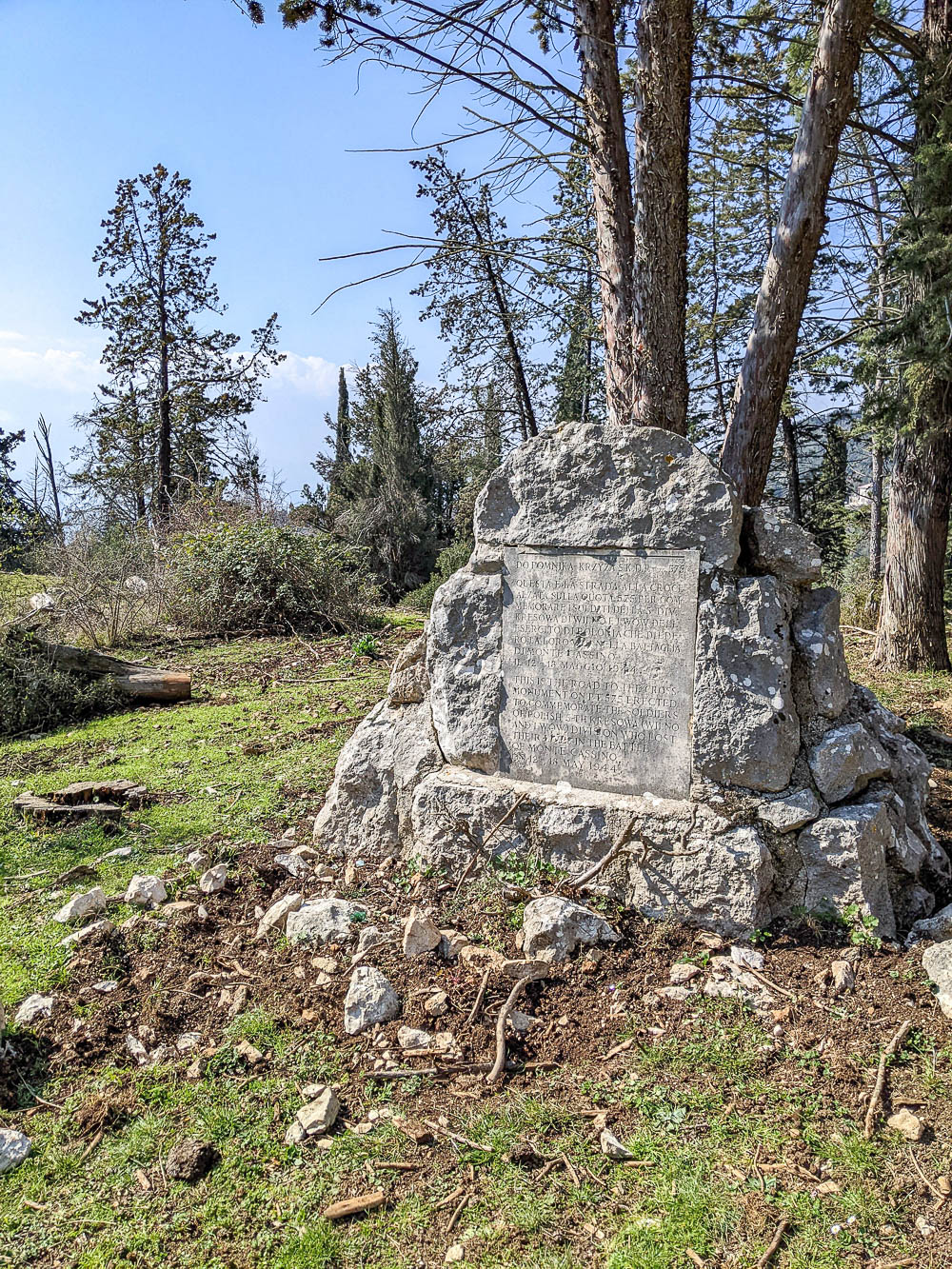
6. Memorial to the 5th Kresowa Infantry Division
This third Polish war memorial is located atop Hill 575. It consists of a giant cross constructed out of steel from the Bailey Bridge and honors the 503 men of the 5th Kresowa Infantry Division who died in fighting at Cassino and the 1,531 more who were wounded.
This location was chosen for its height and visibility from the monastery, but also because Hill 575 was the division’s main goal upon breaking through the Gustav Line. The road to this monument was constructed specifically for this purpose.

7. The Albaneta War Memory Path
The Albaneta is the name given to a complex of sites around the Monte Cassino area. It encompasses:
- The Monte Cassino brewery
- The three memorials listed above
- A working farm
- An apiary
- Tons of trails
- And the estate of the Benedictine fathers of Montecassino which itself includes the ruins of two ancient abbeys – the Monastery of Santa Maria dell’Albaneta and the Monastery of San Matteo Servorum Dei
You’re welcome to walk this entire area and visit the sites, but they have also put together a series of walking routes for your enjoyment. The one we’re most interested in is the War Memory Path. It leads you around through the Albaneta and specifically to the three Polish memorial sites.
Rather than roam around the mountain aimlessly like I did (because I didn’t yet know such an organized route existed), take a look at the War Memory Path which includes walking routes and information like elevation gain/loss and historical background on each of the memorials.
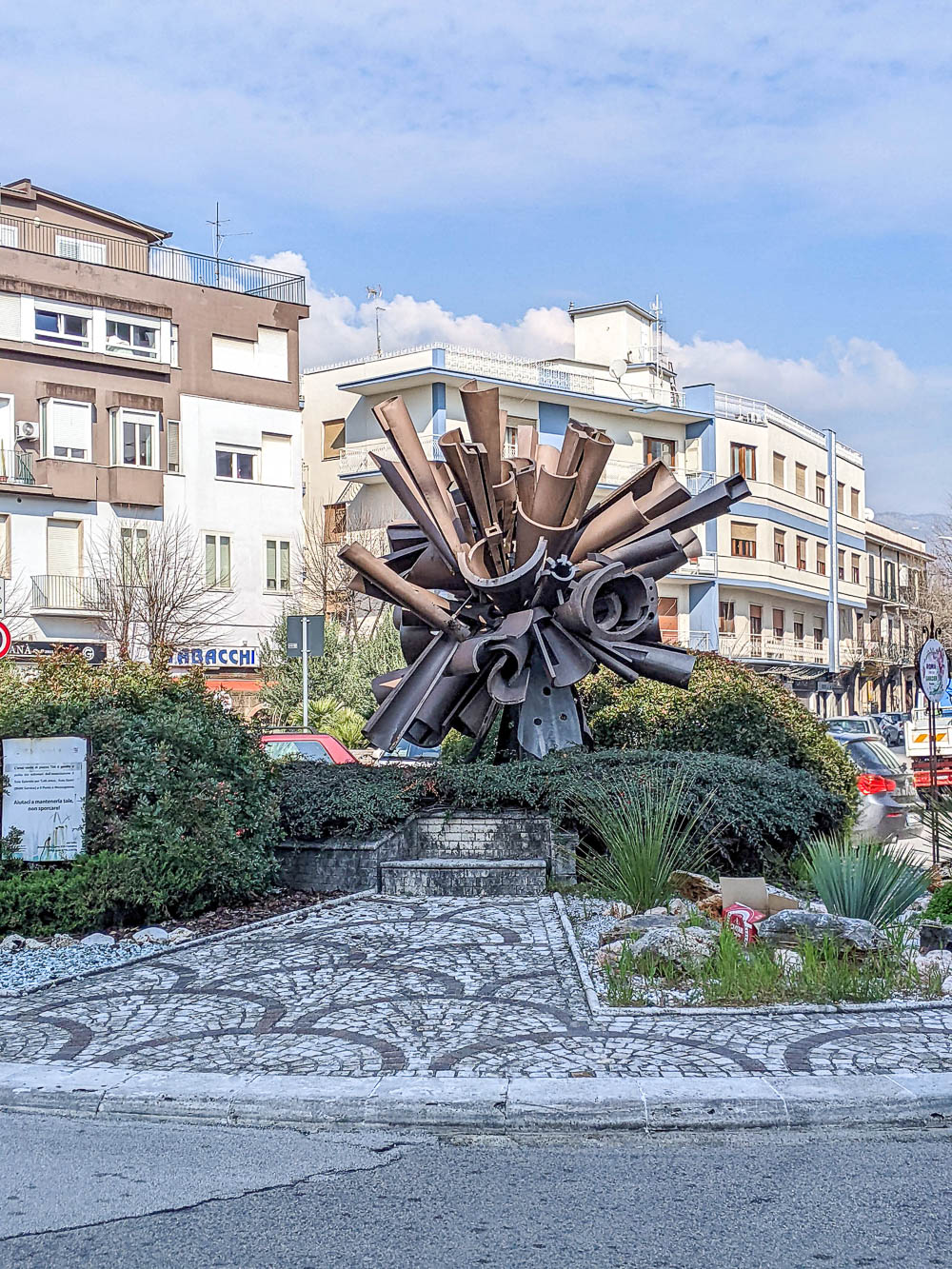
8. Cassino War Cemetery
Just down the mountain from the Monte Cassino monastery is the Cassino War Cemetery. This Commonwealth cemetery contains the graves of 3,992 World War II casualties. Here, you’ll find the graves of those who took part in the Battle of Cassino and surrounding areas who hailed from: Canada, New Zealand, United Kingdom, India, South Africa, and Australia. Plus, 289 unidentified.
At the Cassino War Cemetery you’ll also find the Cassino Memorial that honors the more than 4,000 Commonwealth soldiers who were never found.
The Cassino War Cemetery is only open during certain hours at different times during the year. Be sure to check their website for the most current hours.
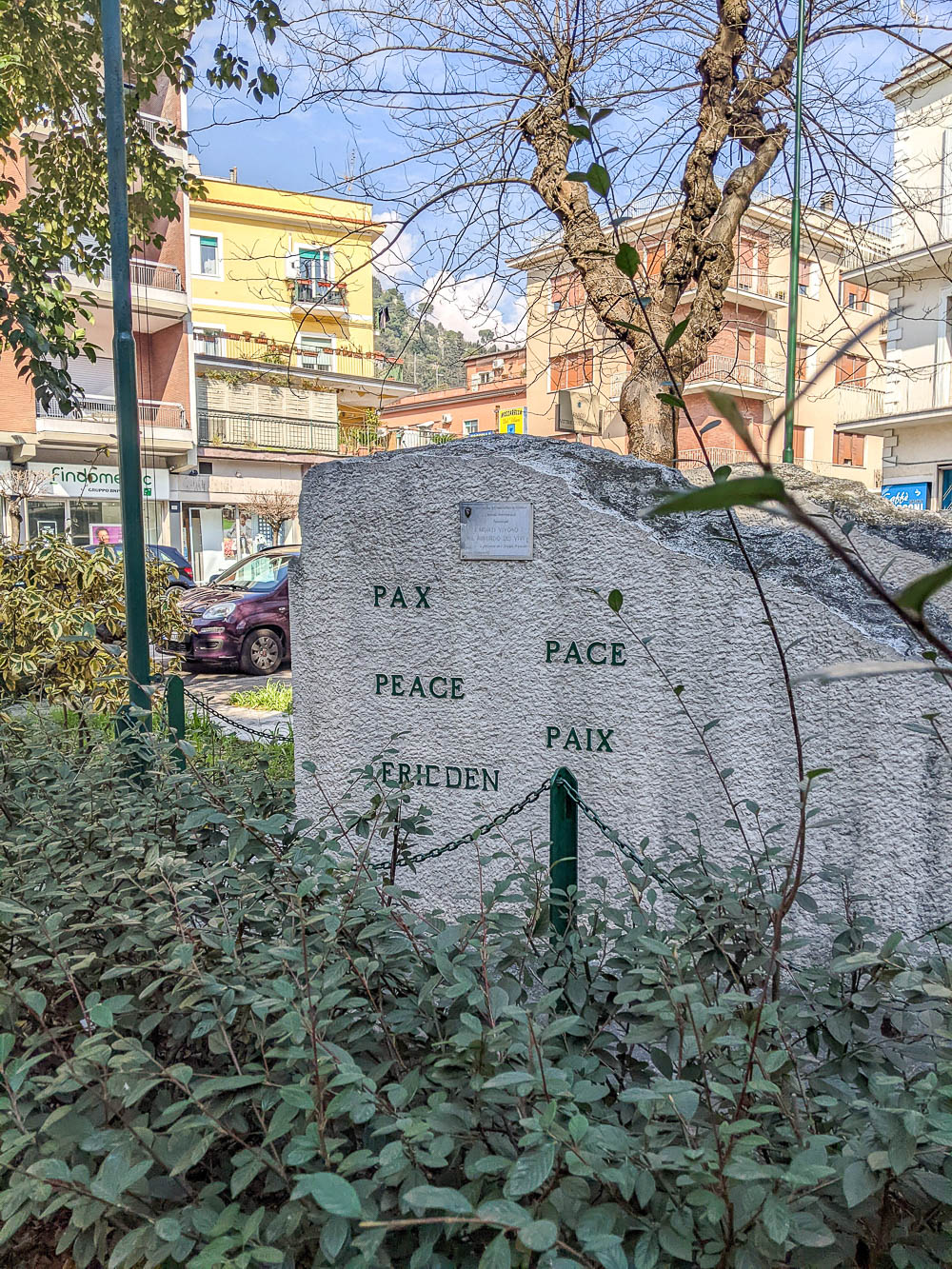
9. German War Cemetery Cassino
It’s not lost on me that visiting a German World War II cemetery might seem a bit… uncomfortable? Treacherous? But I do still feel it’s important. I talk more about this in my post on Normandy sites to visit where I include a visit to La Cambe German Cemetery among those I most recommend.
The German military cemetery in Cassino is actually about 20 minutes north of the monastery in the village of Caira. In it you’ll find the graves of the more than 20,000 German soldiers who died in the fighting at Cassino and southern Italy, including Salerno. This cemetery covers an entire hill and features a few works of art and even a lamp donated by Pope Paul VI.
For more information, location, and visiting hours, etc., check out their official website below, but it’s only available in German. Enter that URL into Google’s website translator for easy reading if you spreche kein Deutsch.
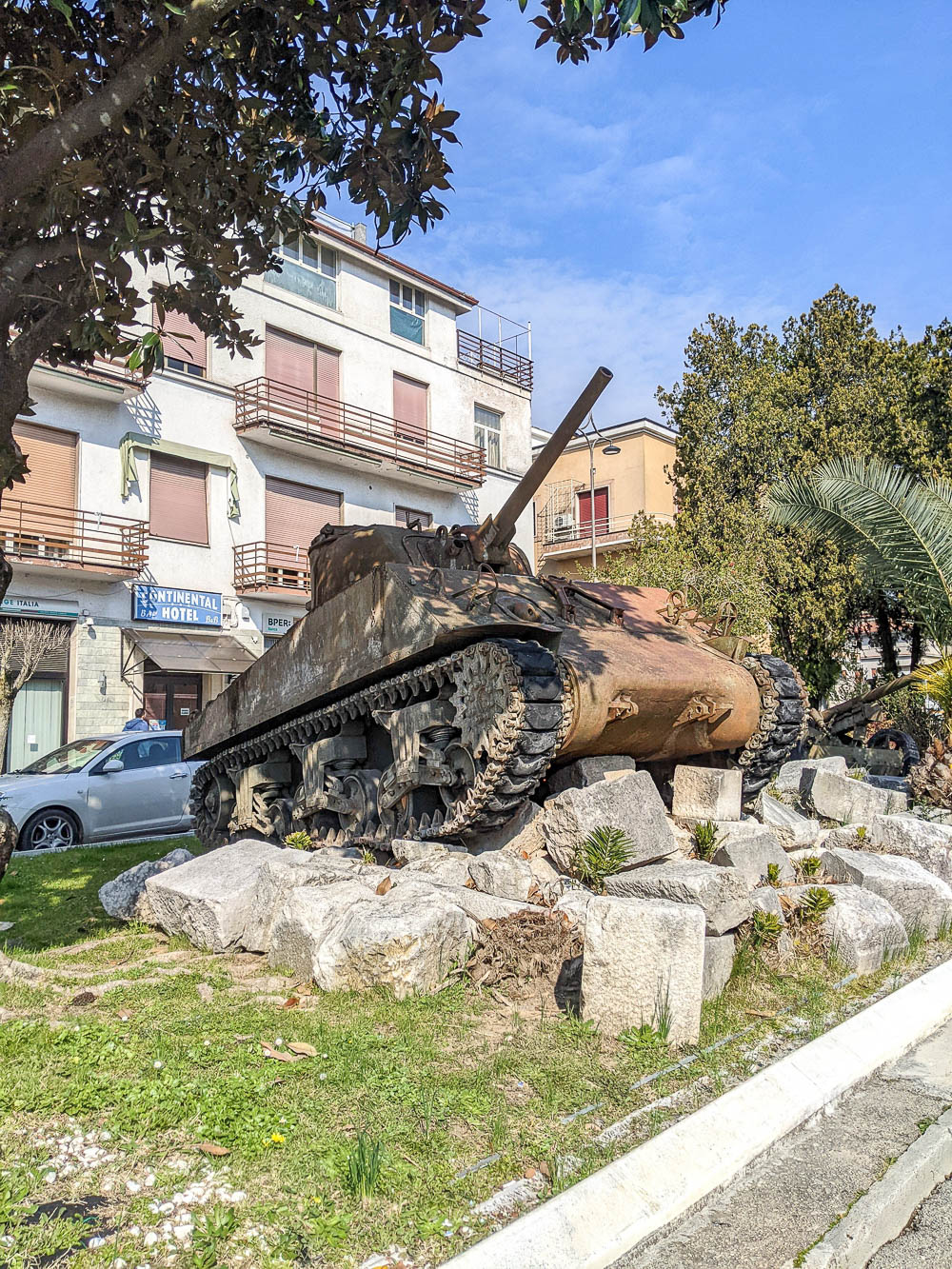
10. WWII history in Cassino town center
Back down in Cassino’s town center you’ll find a lot more World War II history to check out. Spend some time strolling the streets and see how much WWII history in Cassino you can sniff out.
For example, head over to Piazza Alcide de Gasperi where you’ll find the “Cassino City Memorial” which includes:
- A memorialized Sherman tank
- Some war remnants and an anti-tank gun
- A couple of small memorials dedicated to residents of Cassino who were killed at Auschwitz
- A memorial honoring the fallen soldiers of the U.S. 34th Infantry Division
- Another commemorating the sacrifice of the city of Cassino during the war years
- The long, descriptive, and visual Martyrology Wall that honors the 2,000 civilian residents who lost their lives
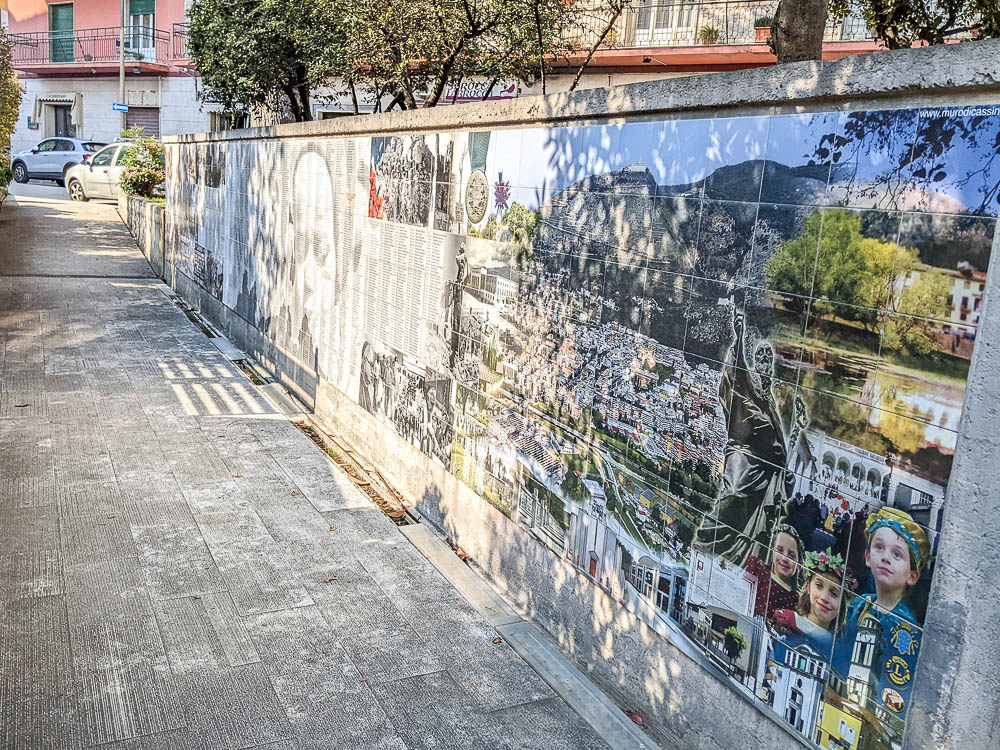
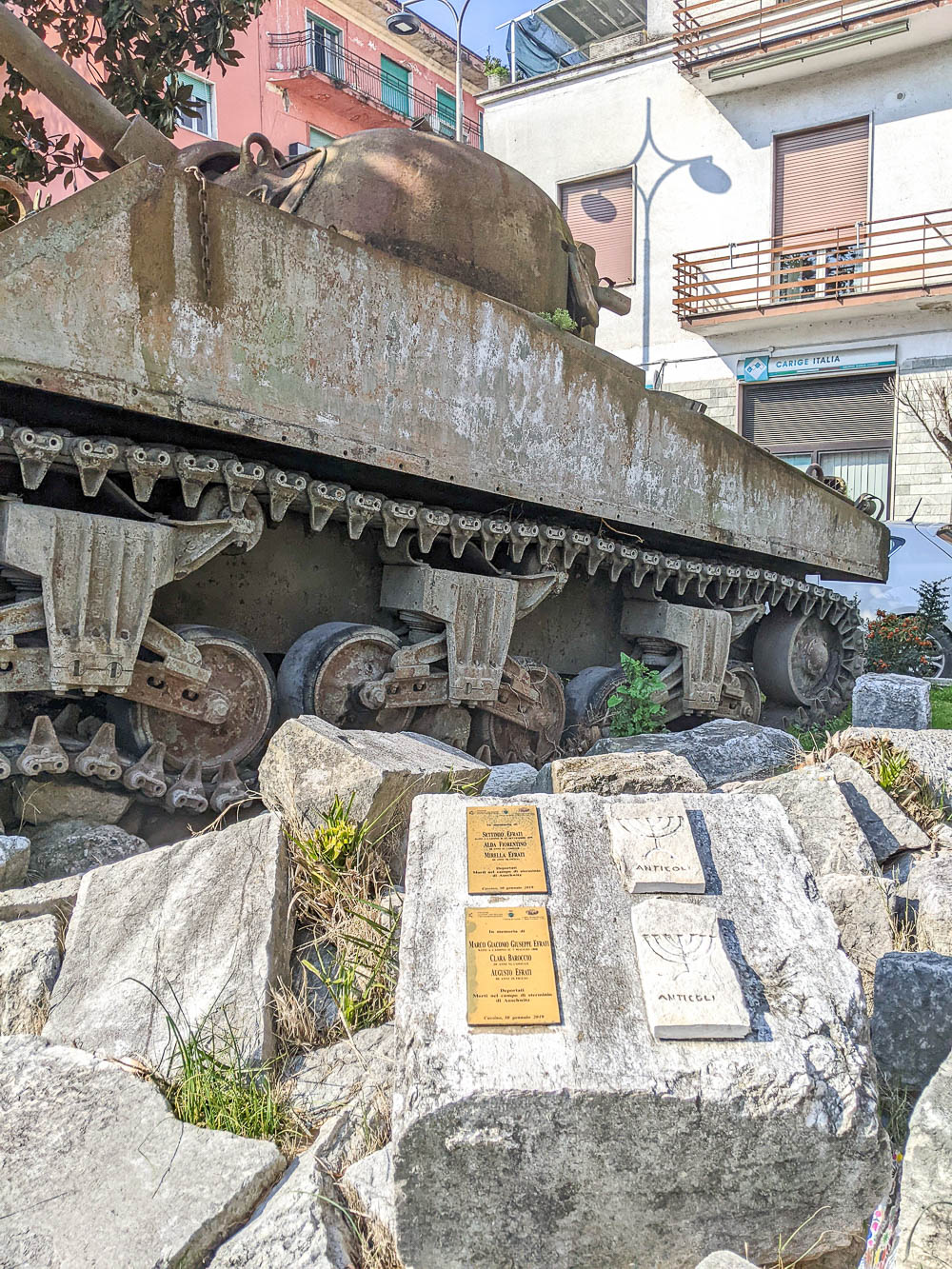
11. Historiale Cassino
Not too far from Cassino’s main center is the Historiale Cassino. This interesting museum aims to tell you all about Cassino’s war history through a unique combination of audiovisual arts, historical artifacts, cinema, and other forms of “educational entertainment.”
The Battle of Montecassino is spread across 13 rooms to give you the most engaging and comprehensive understanding of this critical battle.
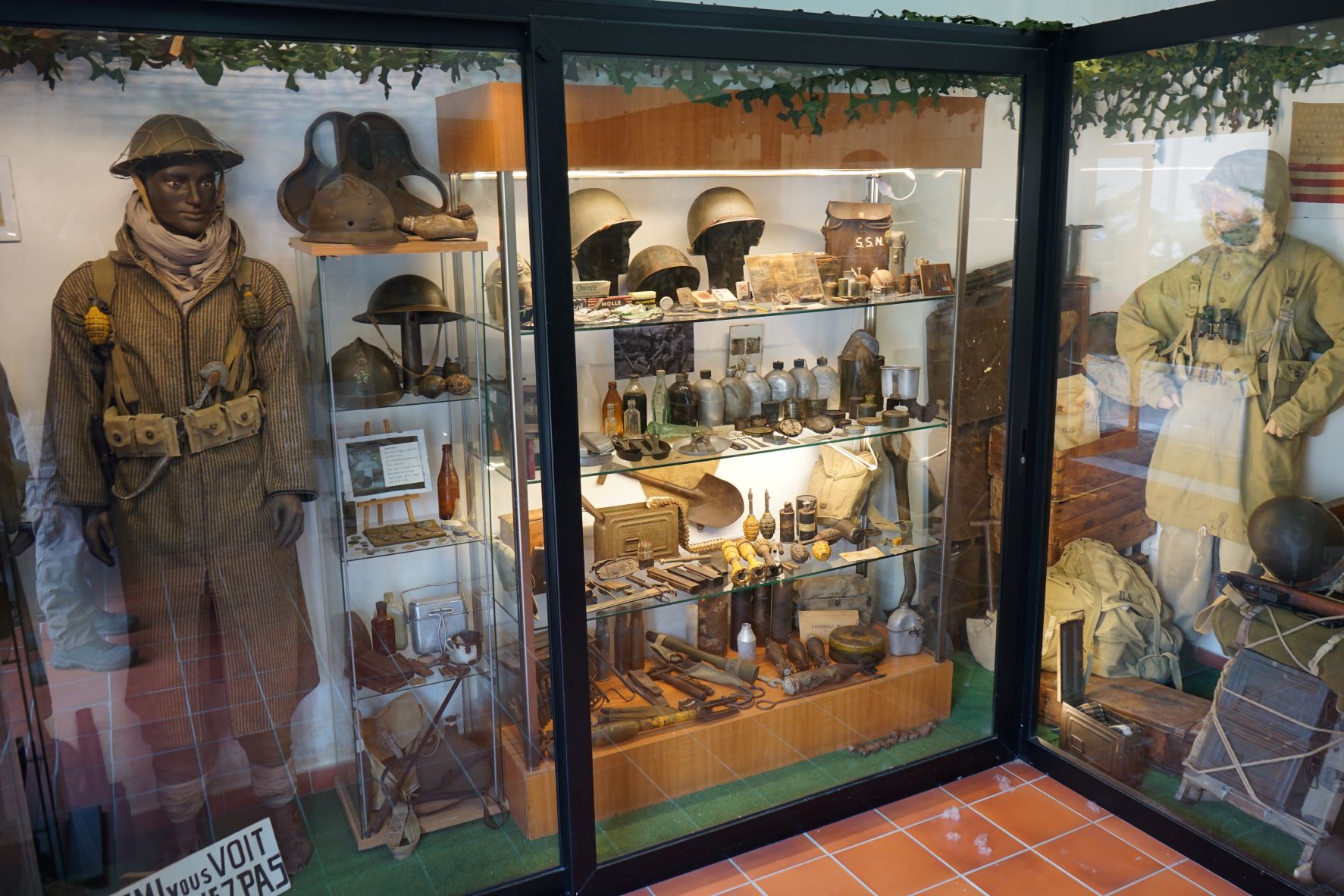
Where to stay when exploring WWII history in Cassino
Here are a few great recommendations for where to stay when visiting Cassino, Italy:
See all available Cassino hotel options here.
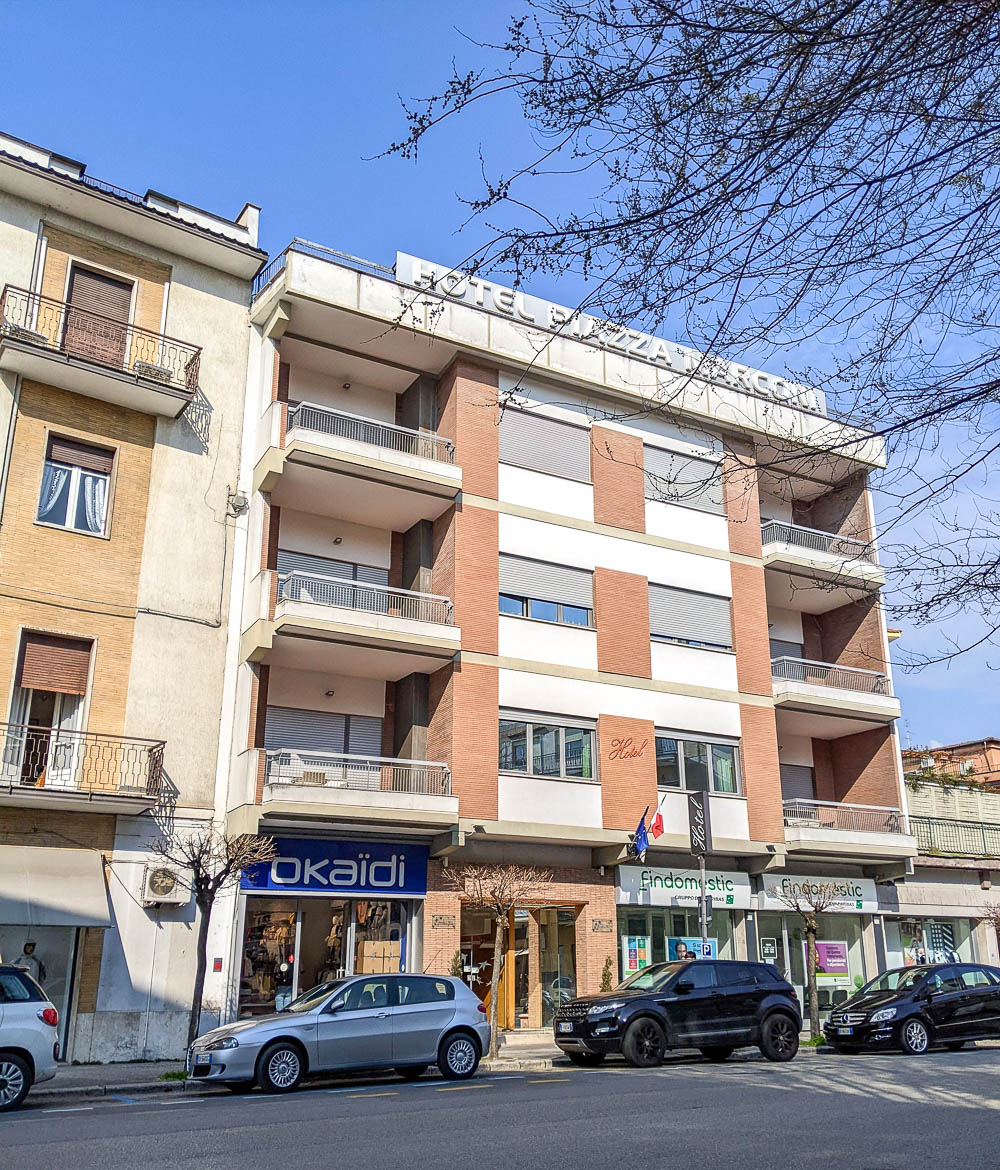
Books on WWII history in Cassino
Before your visit to Cassino, give these books a read to learn more about the WWII history in Cassino, its background, and the surrounding controversies:
- A Travel Guide to World War II Sites in Italy by Anne Leslie Saunders (2016) – Contains detailed lists of sites all over Italy with excellent historical background on each of them.
- Monte Cassino: The Hardest Fought Battle of World War II by Matthew Parker (2005)
- The Battles of Monte Cassino: The Campaign and Its Controversies by Glyn Harper and John Tonkin-Covell (2014)
- Monte Cassino: Ten Armies in Hell by Peter Caddick-Adams (2013)
- Monte Cassino: The Story of the Most Controversial Battle of World War II by David Hapgood and David Richardson (2002)

More info for your visit to Italy
Like this post? Have questions about visiting any of the WWII sites in Cassino? Let me know in the comments below. Thanks for reading.
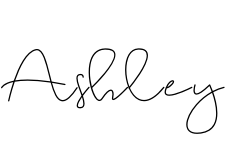
Save this info, pin this image:


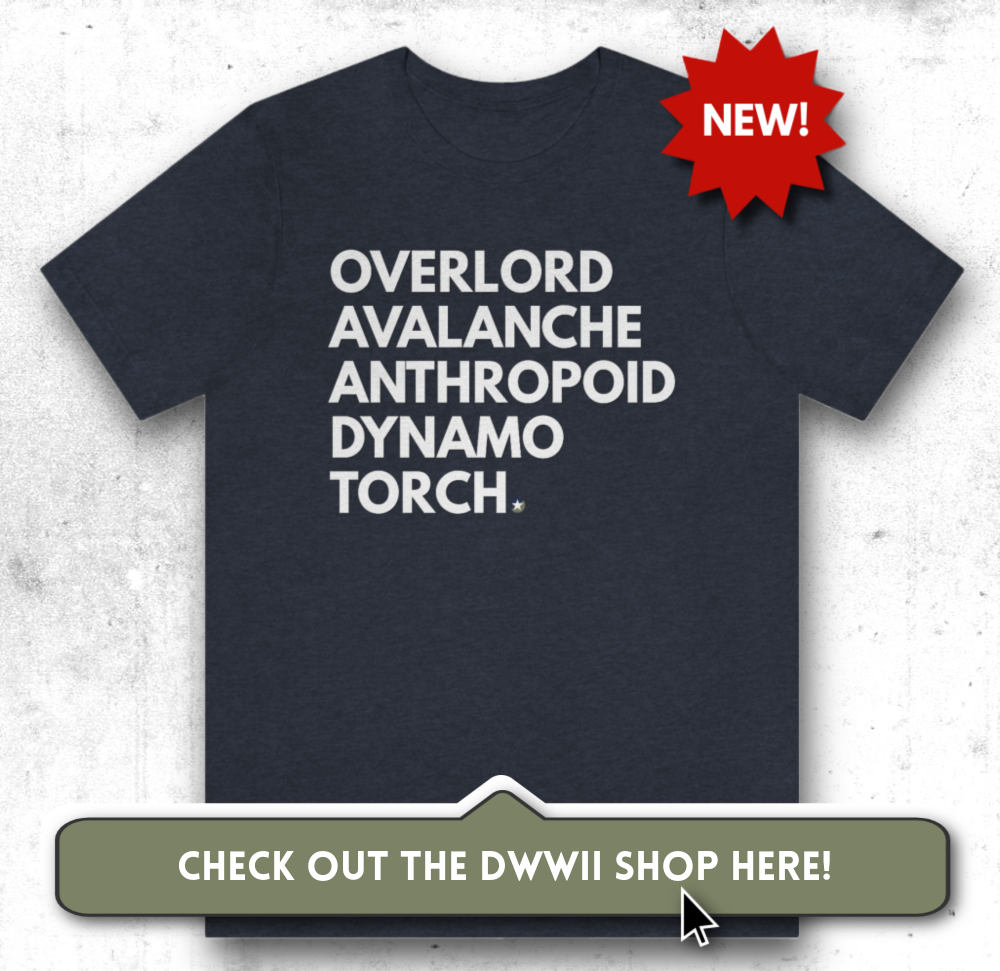
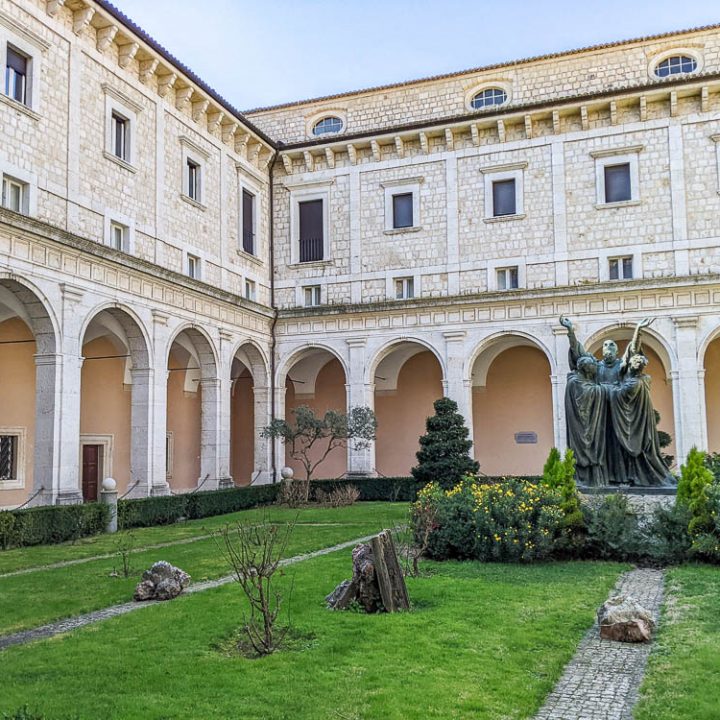
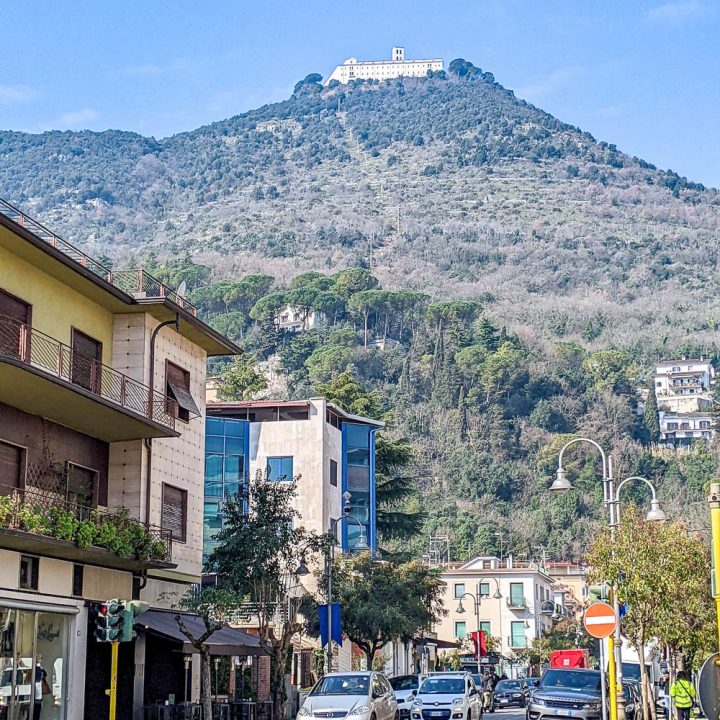


Fantastic article, Ashley. Your love of the topic shines through. I’ll be in Cassino soon, and your advice is invaluable. Cheers, =Tim
Thank you, Tim! I hope you have a great trip!